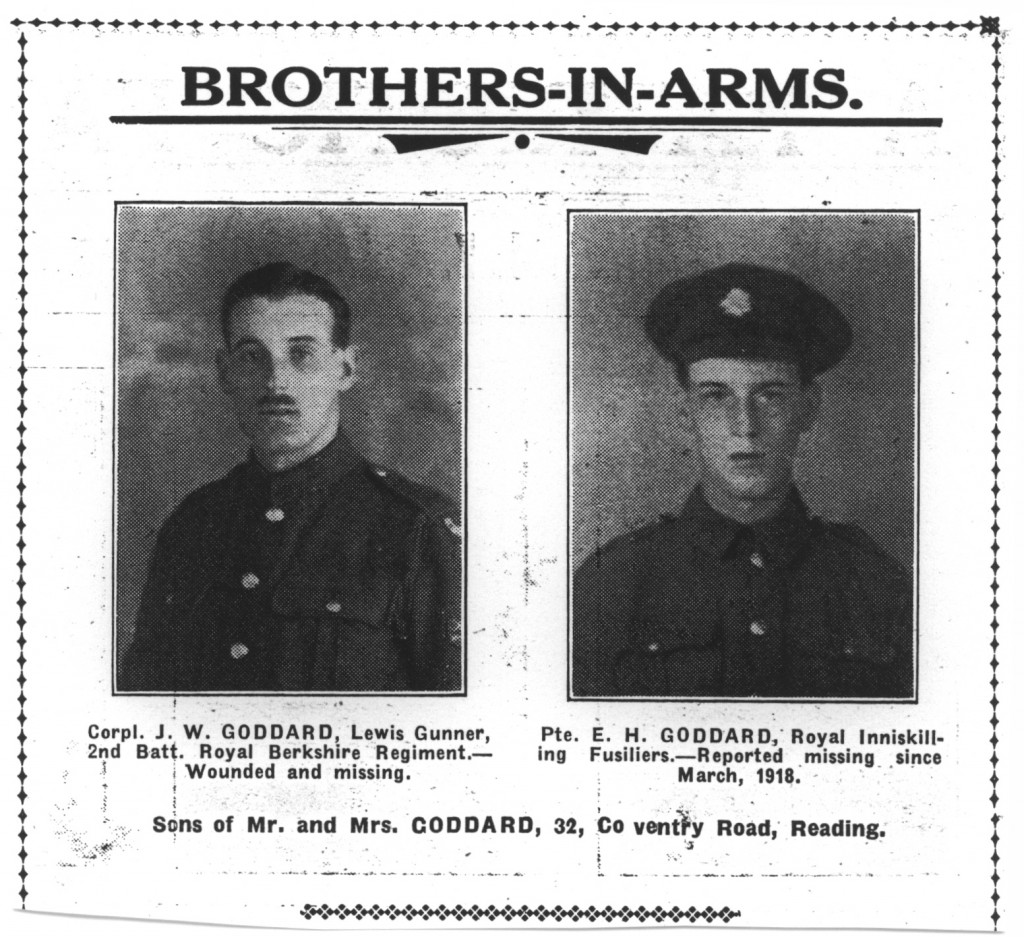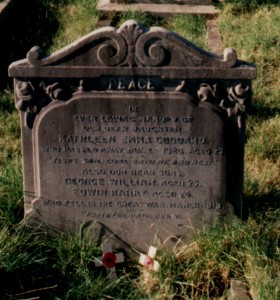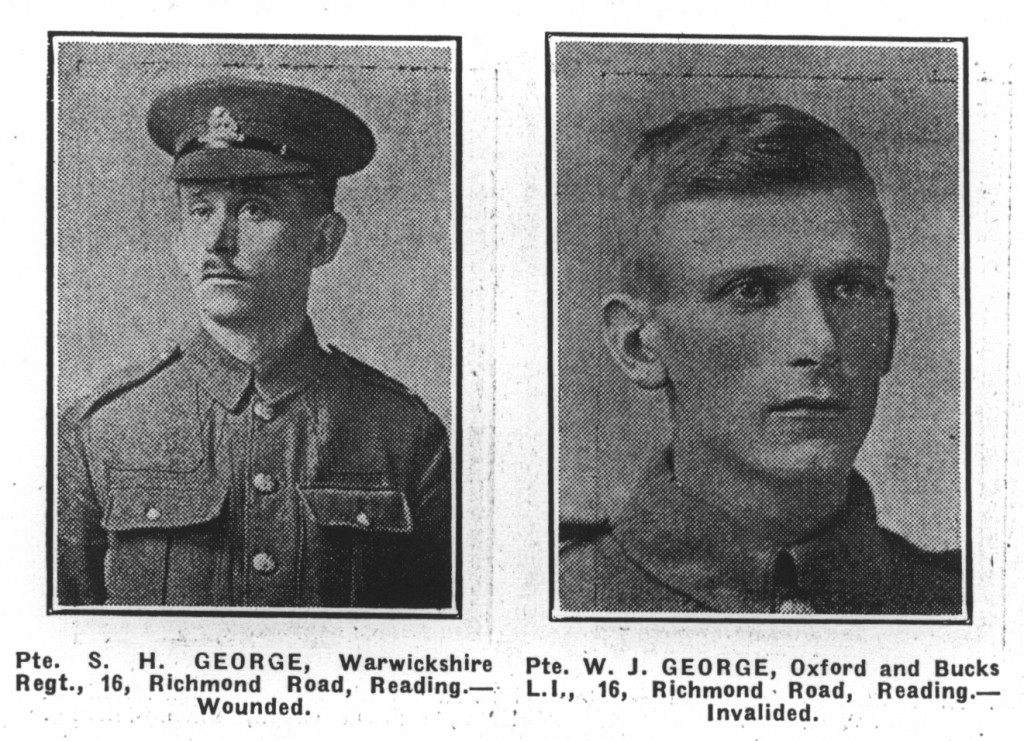George William Goddard
Corporal 200475
2nd Royal Berkshire Regiment
Edwin Harry Goddard
Private 42709
9th Battalion Royal Inniskilling Fusiliers
Division 74
Extension
 |
George William Goddard and Edwin Harry Goddard were the sons of Mr George and Mrs Emma Ann Goddard, of 32, Coventry Road, Reading. They were the eldest sons of seven children. According to the 1911 census George William was a gardener like his father and Edwin a bakers assistant. The brothers are remembered on the St. Bartholomew’s Church war memorial and on their sister’s grave.
 |
War records are not available for the brothers. George served with the 8th Division and Edwin with the 36th (Ulster) Division. These divisions fought in the following battles: Battle of St. Quentin. 21-23 Mar 1918. Actions of the Somme crossings. 24-25 Mar 1918. Battle of Rosieres. 26-27 Mar 1918. Both men were killed within seven days of each other at the start of the German Spring Offensive in 1918. On the 21st March the Germans broke through on a fifty-mile front between the Sensée and Oise rivers. Various British battle positions were penetrated, especially near St. Quentin.
George William Goddard was reported wounded and missing on 22nd March, he was 25. On this day British defences west of St. Quentin were broken through and a hasty retreat was ordered. The Germans took 16,000 prisoners and 200 guns. The body of George Goddard was eventually identified and he was buried in Pargny British Cemetery, Somme. Location II.E.13. Pargny Cemetery was made after the Armistice, by concentrating graves from the surrounding battlefields. More than three-quarters of the burials in this cemetery of over 600 graves are unidentified.
The German advance continued with a vengeance. There was much fierce fighting as the British resisted at the Somme crossings. By the 24th March the Germans were boasting the taking of 30.000 prisoners and 600 guns. So fast was the advance of the Germans that by the 26th March the British had lost the town of Albert, the Germans were only 12 kilometres from Amiens by the following day. Further fighting continued with the French launching counter attacks. However, by the 29th March the Germans were claiming to have captured 70,000 prisoners and 1100 guns since the start of the offensive.
On the 29th March Edwin Harry Goddard was reported missing. Edwin’s body was never identified and he is remembered on the Pozieres Memorial, Panel 38 to 40.
The British were shaken and on 11th April Haig issued a ‘Special Order’ to all ranks which included the now famous words,
“There is no course open to us but to fight it out. Every position must be held to the last man: there must be no retirement. With our backs to the wall and believing in the justice of our cause we must fight to the end”.
